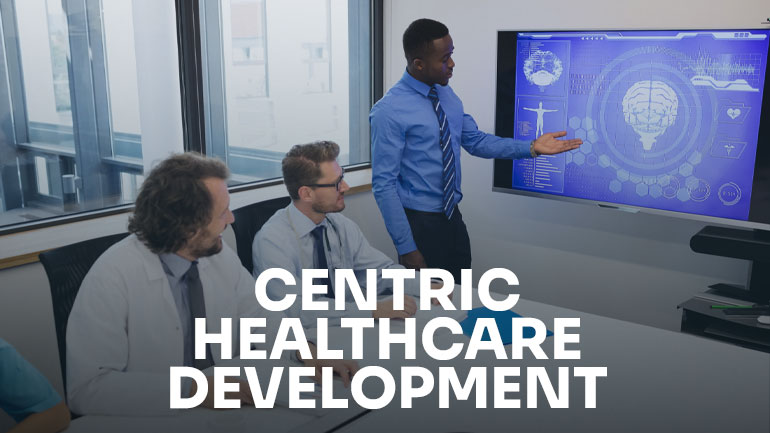
Introduction
In the ever-evolving landscape of healthcare technology, the focus has shifted towards prioritizing patients’ needs and preferences. This shift has led to the emergence of patient-centric development strategies, which aim to revolutionize healthcare applications by placing patients at the forefront of the design process. In this blog, we will delve into the importance of patient-centric development, exploring its strategies and how it can benefit healthcare consumers worldwide.
Understanding Patient-Centric Development
Patient-centric development is a philosophy that revolves around tailoring software solutions to meet the unique needs and preferences of healthcare consumers. Unlike traditional approaches that prioritize technical specifications or regulatory requirements, patient-centric development starts with the patient. It involves integrating patient feedback at every stage of the development process, from ideation to deployment.

Strategies for Patient-Centric Development
- Integrating Patient Feedback: Incorporating patient input throughout the development lifecycle ensures that the final product resonates with real-world user needs. This feedback can be gathered through surveys, focus groups, or direct interactions with patients and caregivers.
- Designing Intuitive Interfaces: User-friendly design is paramount in patient-centric development. Interfaces should be intuitive, easy to navigate, and accessible to users of all ages and technical proficiencies. This involves simplifying complex workflows, minimizing cognitive load, and ensuring consistency in design elements.
- Fostering Developer Empathy: Empathy is a cornerstone of patient-centric development. Developers must cultivate an understanding of the challenges faced by patients, caregivers, and healthcare professionals. This empathy drives innovation and ensures that software solutions address real pain points effectively.
Benefits of Patient-Centric Development
Embracing patient-centric development yields numerous benefits for healthcare consumers:
- Improved Patient Engagement: By involving patients in the development process, software solutions become more aligned with their needs and preferences, leading to higher engagement and adoption rates.
- Enhanced User Satisfaction: Intuitive interfaces and empathetic design foster a positive user experience, increasing satisfaction and loyalty among healthcare consumers.
- Better Health Outcomes: Patient-centric software solutions empower patients to take control of their health, leading to improved adherence to treatment plans, better disease management, and ultimately, better health outcomes.
Conclusion:
NextWave is at the forefront of patient-centric healthcare development, specializing in creating innovative software solutions that prioritize patients’ needs. Our team of experienced developers and designers is dedicated to translating patient feedback into actionable insights, ensuring that our solutions resonate with healthcare consumers worldwide. Partner with NextWave to transform patient-centric ideals into tangible software solutions that drive better health outcomes for all.
With a focus on informative content and actionable insights, this blog provides readers with a comprehensive understanding of patient-centric development in healthcare, while also highlighting NextWave’s expertise in this crucial area.
